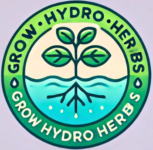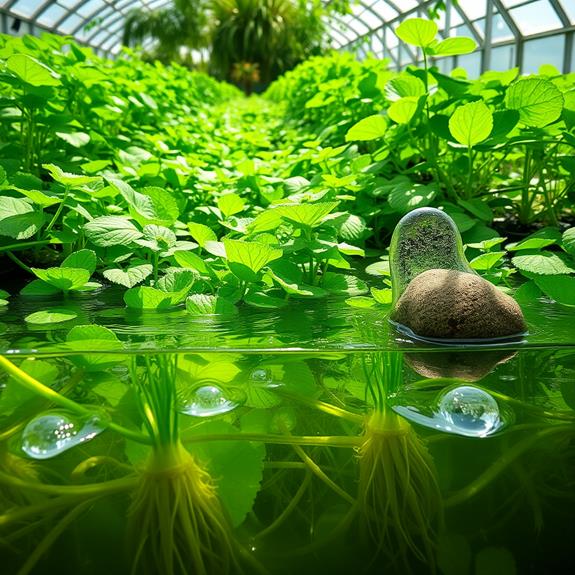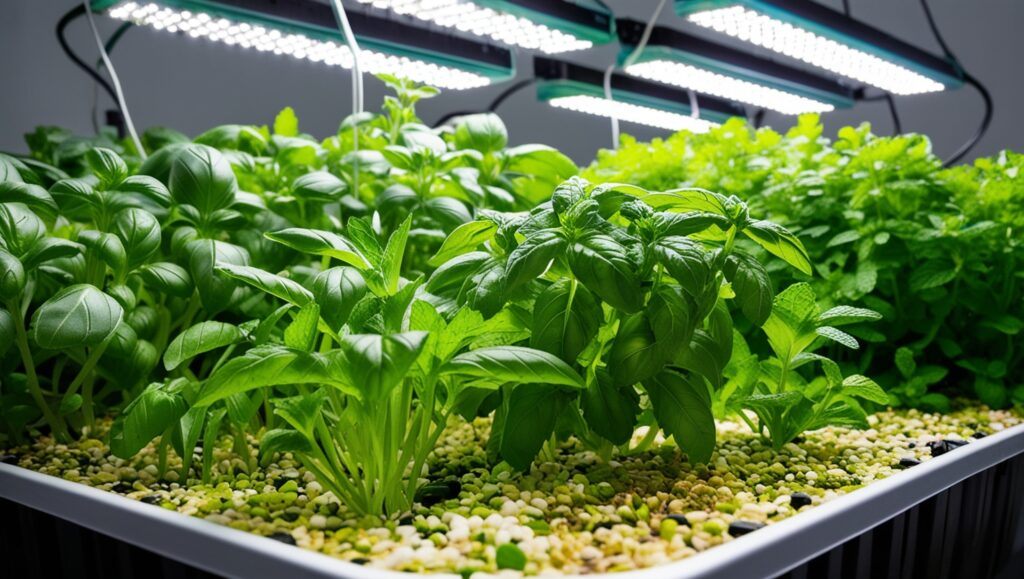Mastering water quality in hydroponics is the lifeblood of the system. In indoor herb gardens, ensuring optimal water quality in hydroponics is crucial to prevent diseases and promote healthy plant growth. This article delves into common water issues in hydroponics and offers practical solutions to keep your herbs flourishing.
GrowHydroHerbs TLDR
- Maintain Optimal Water Quality: Use clean, filtered water to prevent harmful pathogens.
- Regularly Monitor pH Levels: Keep pH within the ideal range for nutrient absorption.
- Prevent Diseases: Employ aeration and cleanliness to avoid waterborne diseases.
- Manage Nutrient Concentrations: Flush systems to remove excess salts and balance nutrients.
- Control Algae and Pests: Block light to nutrient solutions and maintain cleanliness.
- Ensure Adequate Calcium and Carbon: Support plant growth with essential nutrients and proper aeration.
- Consistent Maintenance: Regular checks and adjustments keep your hydroponic system thriving.
Why Is Water Quality in Hydroponics So Important?

Water quality in hydroponics isn’t just about hydration—it’s the medium that delivers essential nutrients to your plants. Poor water quality can introduce harmful pathogens and lead to nutrient imbalances. Regular monitoring of your water supply helps prevent diseases and ensures that your herbs receive the precise amounts of nutrients they need.
Contaminants like salts and organic matter can accumulate over time, causing blockages in your system. Employing proper filtration methods keeps the water clean and your hydroponic setup running efficiently.
How Does pH Affect Your Hydroponic System?
The pH level of your nutrient solution plays a critical role in nutrient uptake. Most herbs thrive in a pH range of 5.5 to 6.5. If the pH drifts outside this range, your plants might experience stunted growth or nutrient deficiencies.
Regularly monitoring and adjusting the pH ensures that nutrients remain soluble and accessible. Use a reliable pH meter and adjust with pH up or down solutions to maintain the ideal growing conditions.
How Can You Prevent Waterborne Diseases?
Waterborne diseases can wreak havoc on your hydroponic garden. Pathogens thrive in stagnant, unclean water. To prevent these diseases, it’s essential to keep the water moving and well-oxygenated through proper aeration.
Additionally, maintaining a clean system by removing debris and organic matter reduces the risk of harmful pathogens. Regularly cleaning your equipment and using UV sterilization or beneficial additives can further protect your plants.
Managing Salts and Nutrient Concentration
Over time, salts from fertilizers can build up, leading to a high EC (electrical conductivity) in your system. This can cause nutrient lockout and toxicity in plants. Periodically flushing your system with clean water helps remove excess salts.
Monitoring the total dissolved solids (TDS) and EC levels ensures your nutrient solution remains balanced. Adjust nutrient concentrations accordingly to provide the optimal environment for your herbs.
Dealing with Algae and Pests in Your Hydroponic Setup
Algae growth is a common issue caused by light exposure to nutrient solutions. Algae competes with your plants for nutrients and can attract pests. To prevent algae, cover reservoirs and channels to block light and maintain clean surfaces.
Implementing a routine cleaning schedule helps minimize pest infestations. If pests like fungus gnats appear, consider using organic pest control methods to keep your herbs safe.
The Role of Calcium and Carbon in Plant Growth
Calcium is vital for cell wall development and overall plant strength. Ensure your nutrient solution contains adequate calcium to support healthy growth. A deficiency can lead to weak stems and poor yields.
Carbon, absorbed as carbon dioxide, is essential for photosynthesis. In indoor setups, ensuring proper aeration can enhance CO2 availability, helping your herbs thrive.
Tips for Monitoring and Adjusting Your Water Supply
Consistent monitoring of your water supply is key to a successful hydroponic garden. Keep an eye on pH levels, EC, and TDS to maintain optimal nutrient availability. Use quality meters for accurate readings.
If you notice any irregularities, adjust your nutrient solution promptly. This proactive approach helps prevent issues before they impact your plants.
How to Keep Your Hydroponic System Thriving
Regular maintenance is crucial. Check for blockages in pipes and pumps, and ensure filters are clean. Employ efficient practices to conserve water and nutrients, making your system both environmentally friendly and economically viable.
Stay vigilant for signs of disease, nutrient deficiencies, or pH fluctuations. Addressing these issues early keeps your herbs healthy and your garden productive.
By understanding and addressing these water issues, you’ll create an ideal environment for your indoor herb garden to flourish.
Frequently Asked Questions
What pH level is ideal for hydroponic systems?
A pH range of 5.5 to 6.5 is generally optimal for most hydroponic systems, ensuring proper nutrient uptake and plant health.
Why is water quality important in hydroponics?
Water quality directly affects nutrient delivery and plant health. Contaminants or imbalances can cause deficiencies or diseases in plants.
Can tap water be used in hydroponics?
Tap water is often not pure enough for hydroponics due to impurities and mineral content. It’s recommended to use filtered or distilled water for better results [3].
What happens if the pH is too high or too low in hydroponics?
A pH outside the optimal range can lead to nutrient lockout, causing deficiencies and stunted plant growth.
How do you prevent waterborne diseases in hydroponic systems?
To prevent waterborne diseases, maintain proper water circulation, filtration, and ensure the water is oxygenated and clean.
How often should you monitor water quality in hydroponics?
It’s important to regularly monitor water quality, especially pH and nutrient levels, to ensure optimal growing conditions and prevent issues.


